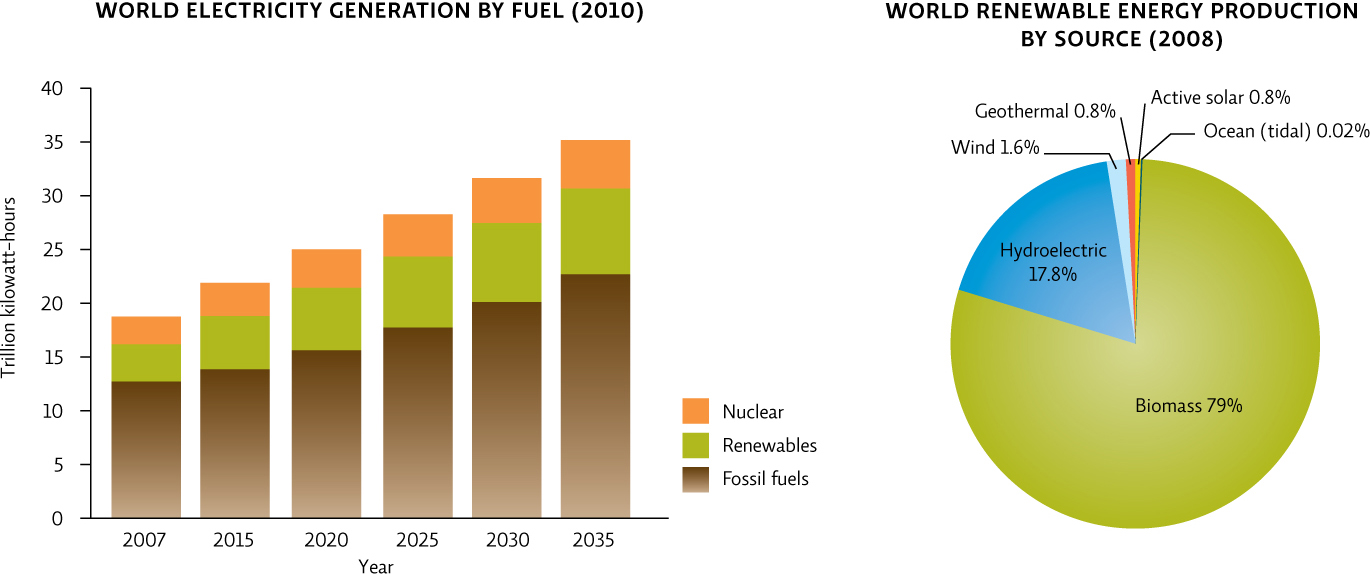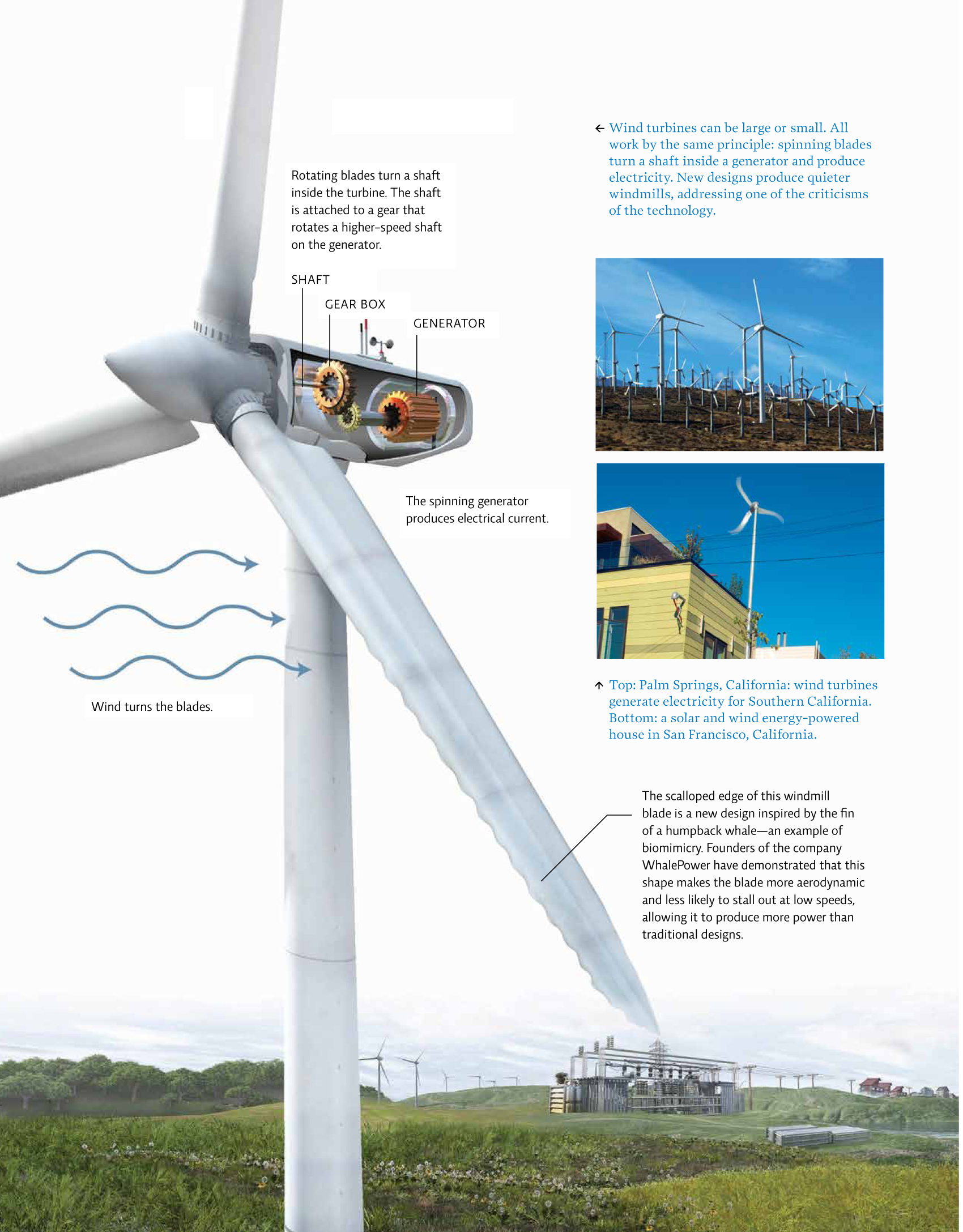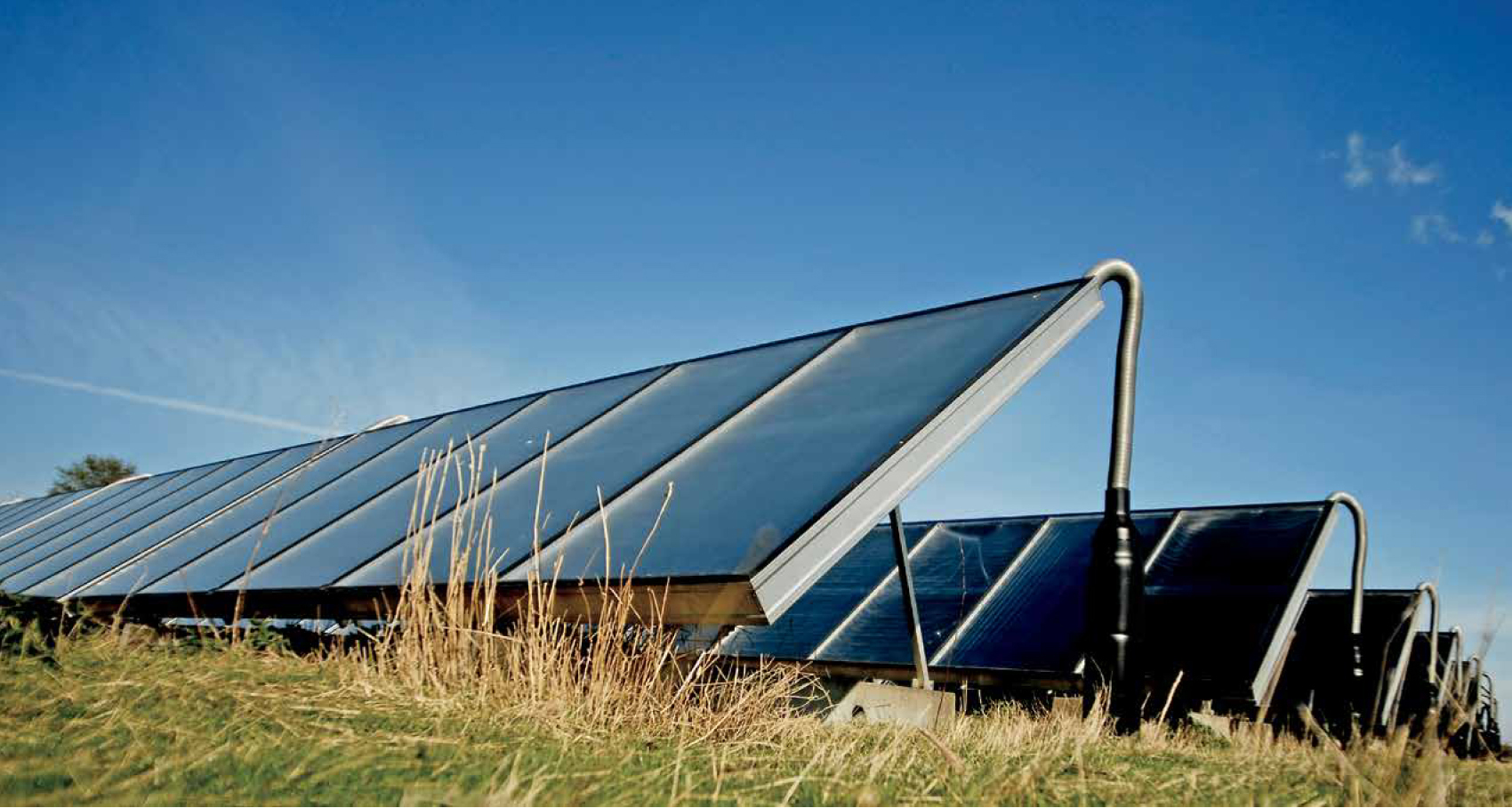24.3 To become sustainable, Samsø would harness the power of one of its most plentiful natural resources.
A major part of Samsø’s transformation was the installation of 11 onshore and 10 offshore wind turbines designed to harness the power of wind energy, or energy contained in the motion of air across Earth’s surface. There is no shortage of wind on Samsø, and the powerful breezes turn huge blades (up to 40 metres in length) that are connected to a generator, converting mechanical energy into electricity.
Nine of the onshore turbines on Samsø were purchased collectively by groups of farmers who bought shares in their construction. “People on the island are personally invested in this,” says Bernd Garbers, a German engineer who lives on the island and is a consultant for the firm that won the energy contest, Samsø Energy Academy. The machines produce 75% of the electricity used by the islanders.
Samsø uses about 500 billion kilojoules (kJ) of energy each year. A barrel of oil produces 6.15 million kJ, so Samsø uses 81 300 barrels of oil equivalents (BOE) annually (that’s 500 billion divided by 6.15 million). The entire human population uses somewhere between 50 and 70 billion BOE per year, and only about 18% of that energy comes from renewable resources. Canada fulfills most of its energy needs through renewable energy, mainly through hydroelectric power. [infographic 24.1]

438
Ideally, Samsø residents would have swapped their vehicles for cars that run on hydrogen or electricity, but those technologies were too expensive and not efficient enough to use on the island. Since Samsø would continue to rely on conventional fuels for transportation, engineers decided to install large offshore wind turbines to produce an equivalent amount of clean energy, offsetting uses by motor vehicles and boats. Islanders are working toward a gradual transition to electric vehicles and those powered by biofuels (see Chapter 25). The island’s small size helps make all this feasible since daily “commutes” are short and kilmetres travelled per person per day are lower than in most industrialized nations.
Far off the coast, the offshore turbines are especially efficient at generating energy because wind conditions are better at sea. In some especially windy locations, people have built strategically placed wind farms, which can contain dozens of turbines. In 2010, the world’s largest was located in Texas, the leading producer of wind energy in the United States. It has 627 wind turbines that generate enough electricity—781.5 megawatts (MW)—to power 230 000 homes per year. Larger wind farms are under construction, with one in Oregon slated to produce 845 MW. Although wind power is on the rise in Canada, the largest wind farm to date, in Gros Morne, Québec, only generates 211 MW annually. [infographic 24.2]

But wind energy isn’t perfect. First, even for a blustery location like Samsø, wind is intermittent—it stops and starts irregularly, not producing a steady stream of power. And wind turbines are not cheap. Each onshore turbine costs the Samsø islanders the equivalent of $1 million; offshore turbines rang up at $5 million apiece. Beyond cost, wind turbines can create noise, and some people see them as an eyesore. They can also have an impact on the local environment, threatening birds and bats, who are unable to nest near turbines or are killed by rotating turbine blades. But switching energy reliance from fossil fuels to wind and other alternatives might have a net benefit to bird and bat populations. Wind farms globally cause 0.3 to 0.4 bird fatalities per GWh while fossil fuel-powered electricity generation causes 5.2 per GWh. Still, to decrease the risk from windmills, engineers have tried to avoid placing them in known migratory flight paths or close to areas frequented by birds of prey such as eagles.
439
440
